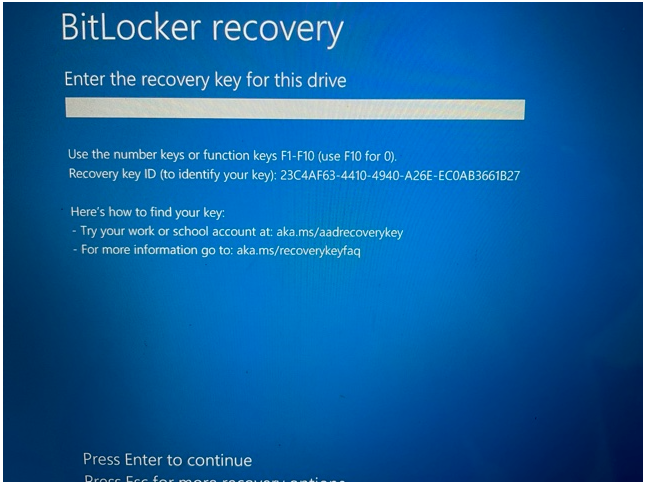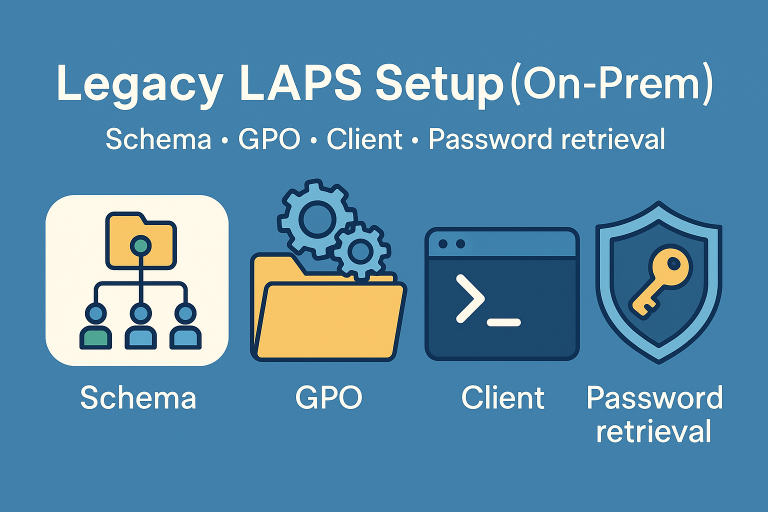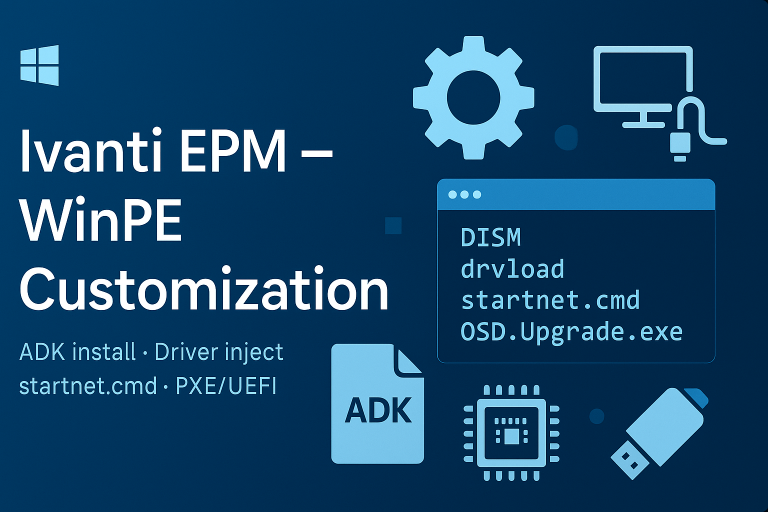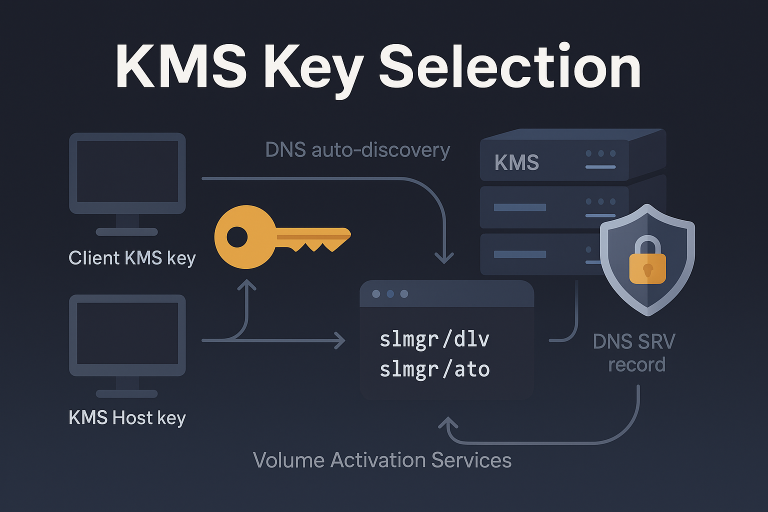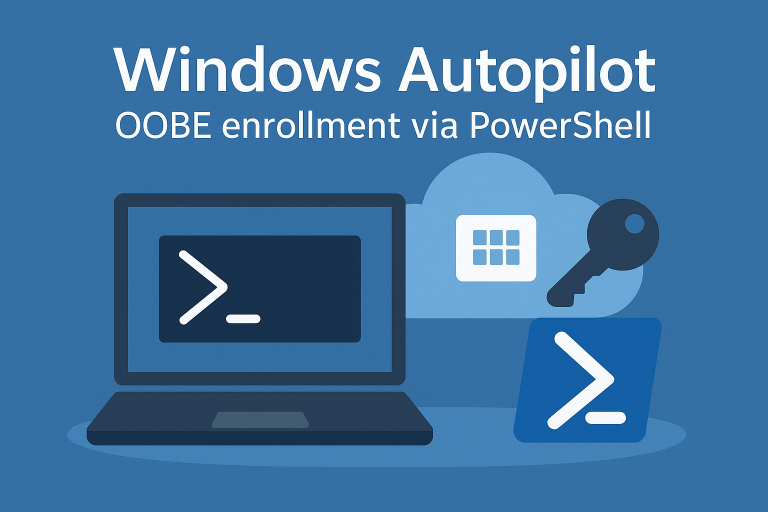Introduction
Enabling BitLocker on a workstation is straightforward. In an enterprise, the main challenges are:
- Configuring Active Directory to store recovery keys,
- Enabling/configuring TPM,
- Automating BitLocker activation with a script.
This post walks through the essential steps to deploy BitLocker on workstations.
Active Directory Configuration
BitLocker AD Features
Install these on any admin workstation that will manage BitLocker keys (in addition to the Active Directory Users and Computers console).
- Install via PowerShell:
Install-WindowsFeature -Name "RSAT-Feature-Tools-BitLocker","RSAT-Feature-Tools-BitLocker-RemoteAdminTool","RSAT-Feature-Tools-BitLocker-BdeAducExt"
- …or install manually:
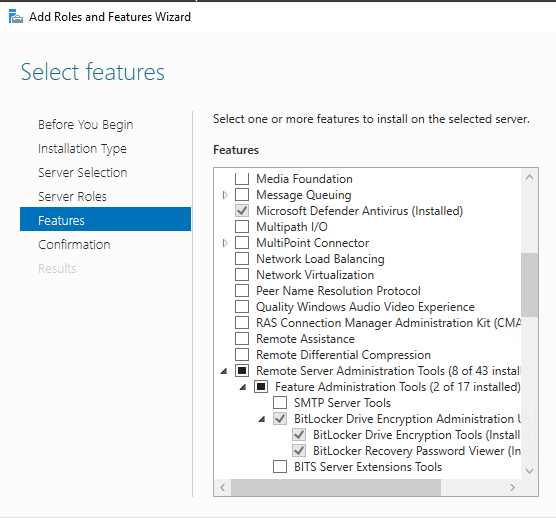
Active Directory Delegation
Delegate read access to BitLocker keys to a security group (e.g., SupportNiveau2).
- Open Active Directory Users and Computers.
- Right-click the OU → Delegate Control…
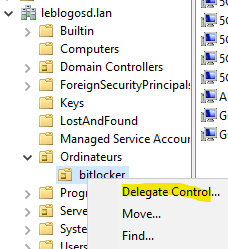
- Select the target group.
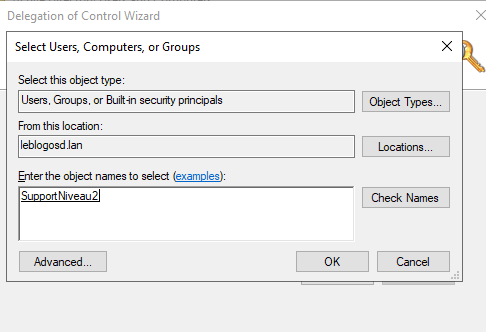
- Choose Create a custom task to delegate.
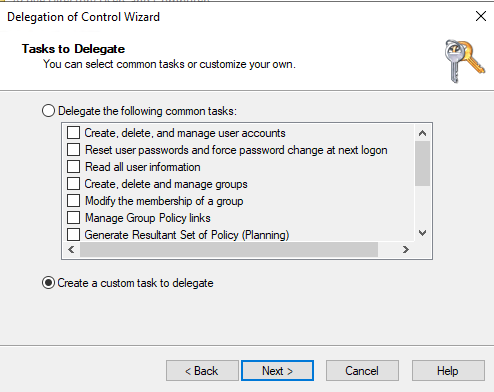
- Select the object:
MSFVE-RECOVERYINFORMATION.
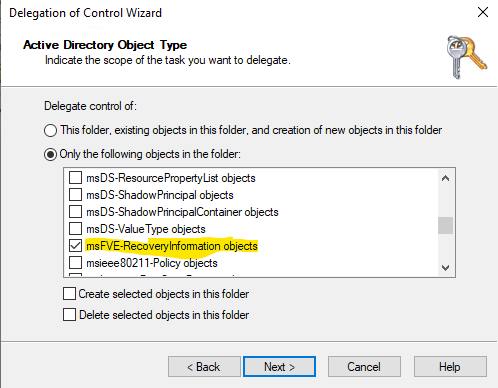
- Grant Full Control.
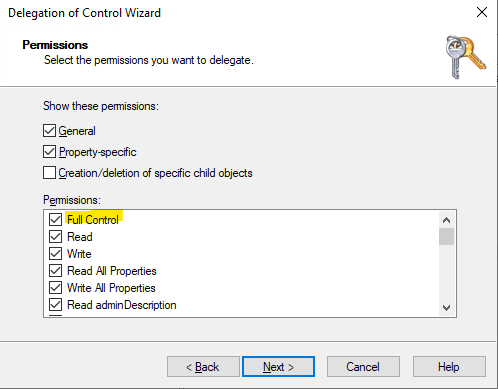
GPO to Configure BitLocker
The GPO stores recovery keys in AD DS and defines defaults. Creating it does not enable BitLocker automatically, so you can implement it early in the project.
- Create a new GPO in Group Policy Management and link it to the computers’ OU.
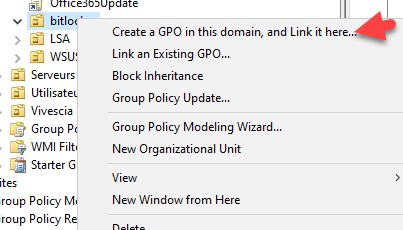
- Give the GPO a clear name.
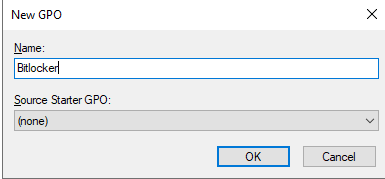
Computer Configuration→Administrative Templates→Windows Components→BitLocker Drive Encryption- Store BitLocker recovery information in Active Directory Domain Services → Enabled
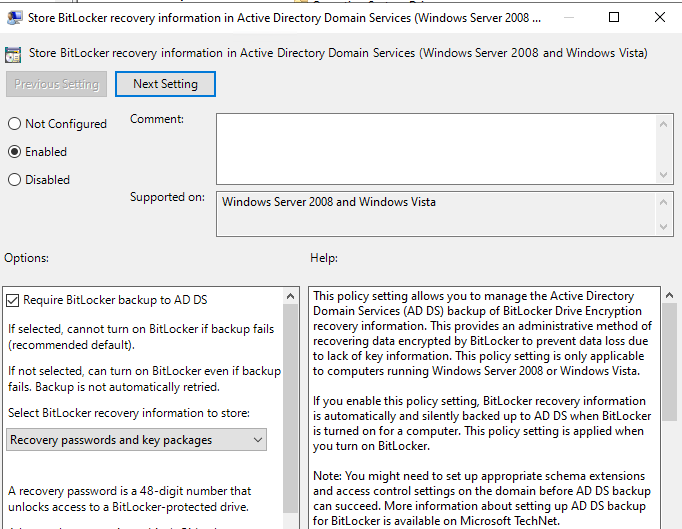
Computer Configuration→Administrative Templates→Windows Components→BitLocker Drive Encryption- Choose drive encryption method and cipher strength → Enabled (set your standard)
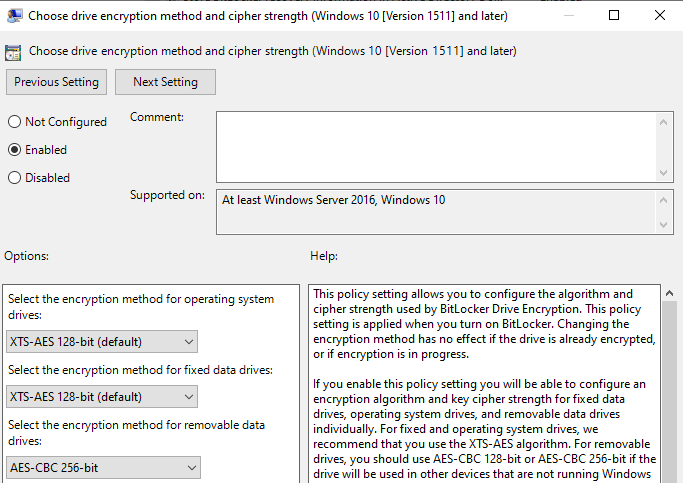
Computer Configuration→Administrative Templates→Windows Components→BitLocker Drive Encryption→Operating System Drives- Enforce drive encryption type on operating system drives → Enabled → Used Space Only
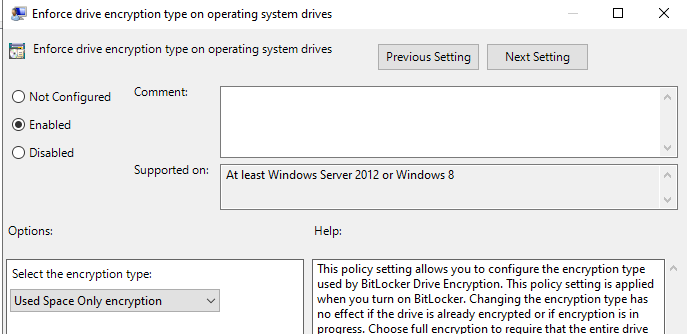
Computer Configuration→Administrative Templates→Windows Components→BitLocker Drive Encryption→Operating System Drives- Choose how BitLocker-protected operating system drives can be recovered → Enabled
- Save BitLocker recovery information to AD DS for OS drives
- Store recovery passwords and key packages
- Choose how BitLocker-protected operating system drives can be recovered → Enabled
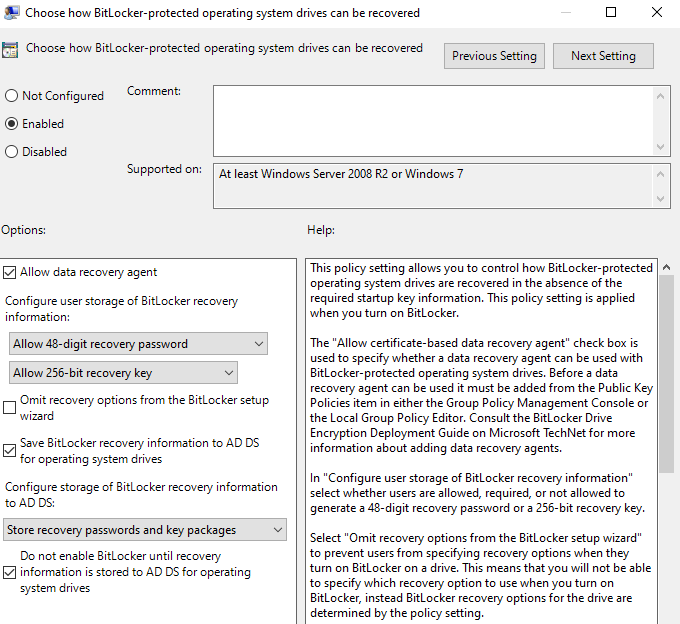
Computer Requirements
TPM Management
Most devices ship with TPM (especially TPM 2.0) already enabled. TPM is a prerequisite for BitLocker.
- How to enable TPM: TPM Chip Activation
UEFI
UEFI mode is recommended (mandatory for Windows 11). Validate older Windows 10 devices.
UEFI detection script:
BitLocker Activation
Manual
From File Explorer, you can enable/disable BitLocker on supported volumes.

Via Script
Tip: If a reboot is pending, wait before enabling BitLocker. Suspend mode may be unreliable in that state.
Example activation snippet:
Function Get-PendingReboot {
$isReboot = $False
if (Test-Path "HKLM:\SOFTWARE\Microsoft\Windows\CurrentVersion\WindowsUpdate\Auto Update\RebootRequired") { $isReboot = $True }
if (Test-Path "HKLM:\SYSTEM\CurrentControlSet\Control\Session Manager\PendingFileRenameOperations") { $isReboot = $True }
if (Test-Path "HKLM:\SOFTWARE\WOW6432Node\LANDesk\managementsuite\WinClient\VulscanReboot") { $isReboot = $True }
if (Test-Path "HKLM:\SOFTWARE\Microsoft\Windows\CurrentVersion\Component Based Servicing\RebootPending") { $isReboot = $True }
Return $isReboot
}
# ******************** Encrypt Volume ***************************
if (((Get-tpm).TpmReady -eq $True) -and (Get-PendingReboot -eq $false)) {
# ******************* C drive *******************************
# Encrypt volume C
If ($StateC -eq "FullyDecrypted") {
Write-Host "Enable BitLocker on C Drive"
Add-BitLockerKeyProtector -MountPoint "C:" -TpmProtector
Enable-BitLocker -MountPoint "C:" -EncryptionMethod XtsAes128 -RecoveryPasswordProtector -SkipHardwareTest -ErrorAction SilentlyContinue
}
}
Full script: ActivateBitlocker (GitHub)
If BitLocker Is Already Enabled
If BitLocker was enabled before the GPO, force a key backup to AD:
$BLV = Get-BitLockerVolume -MountPoint "C:"
Backup-BitLockerKeyProtector -MountPoint "C:" -KeyProtectorId $BLV.KeyProtector[1].KeyProtectorId
Retrieve the BitLocker Key
From Active Directory Users and Computers, the BitLocker recovery key is visible on the computer object.
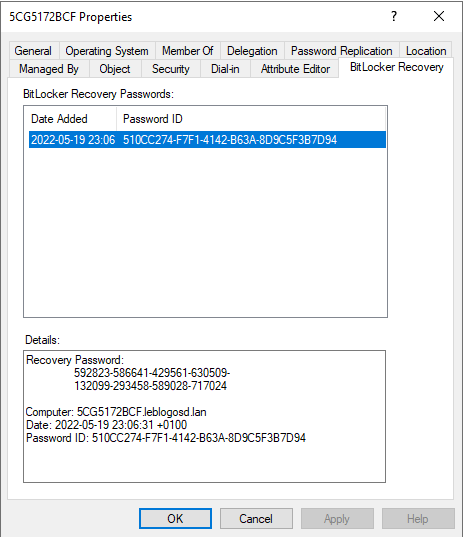
If the device cannot start, it will prompt for the recovery key.
